Berkeley’s polypore (Bondarzewia berkeleyi) is a parasitic fungus commonly known as “Berkeley’s Polypore” or “Stump Blossoms.” This massive fungus causes butt rot in oaks and other hardwood trees and is a sight to behold at full maturity. While it is edible when young, it causes lots of disappointment to hopeful Hen of the Woods hunters and new foragers, praying they’ve (literally) stumbled across a massive fungus that will keep their cooking pot full for weeks.
Characterized by its large, fan-like caps and distinct habitat, this mushroom offers a unique aesthetic and culinary experience for those who can identify it correctly. This guide delves into the identification, habitat, history, lookalikes, and edibility of the Berkeley’s polypore mushroom.
- Scientific Name: Bondarzewia berkeleyi
- Common Names: Berkeley’s Polypore or Stump Blossoms
- Habitat: On the ground, at the base or near the base of oak and other deciduous trees
- Edibility: Edible when young
- Psychoactive properties: None
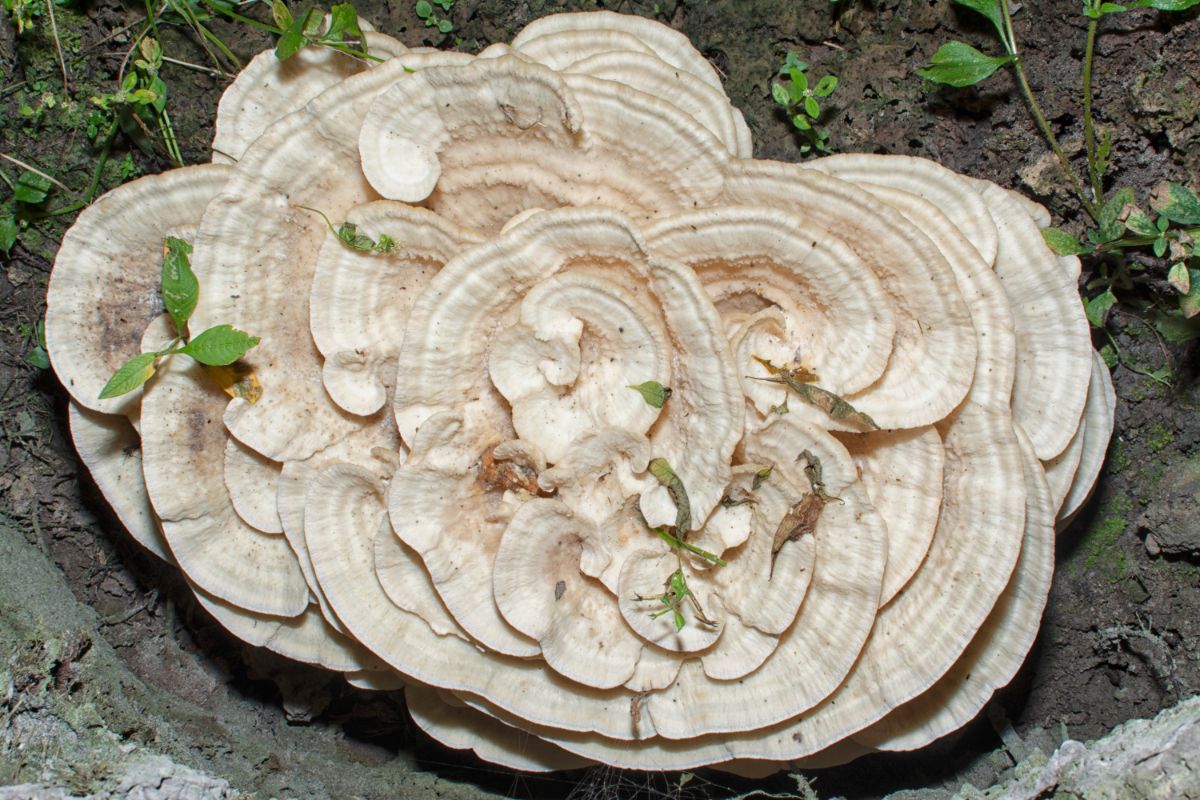
Jump to:
- All About Berkeley’s Polypore
- Berkeley’s Polypore Identification Guide
- Berkeley’s Polypore Lookalikes
- Foraging Berkeley’s Polypore
- Berkeley’s Polypore Edibility and Cooking Preparations
- Medicinal Properties of Berkeley’s Polypore
- Lifecycle and Ecological Significance of Berkeley’s Polypore
- Common Questions About Berkeley’s Polypore
All About Berkeley’s Polypore
Berkeley’s polypore is a parasitic and saprophytic fungus that primarily grows at the base of deciduous trees, particularly oaks. It can also grow around decaying stumps or from buried roots. Berkeley’s polypore can grow to impressive sizes, with some specimens measuring over 2 feet across. This mushroom is commonly found in eastern North America, Europe, Asia, and Africa. The fruiting bodies typically appear from July to October.
When young and tender, the Berkeley’s polypore is considered edible. The outer edges of the caps, also known as “leaves,” can be cut and used in various dishes. As the mushroom ages, it becomes tough, woody, and bitter, making it less appealing for consumption.
Berkeley’s Polypore has drawn attention from mycologists since its discovery, with Elias Fries declaring it the “most noble of all the polypores known to me” in 1851 (quote translated by Michael Kuo). The species name “berkeleyi” honors British mycologist M.J. Berkeley (1803-1889). And the genus name “Bondarzewia” is in honor of Apollinaris Semenovich Bondartsev (1877-1968), a Russian mycologist devoted to the study of polypores.
DNA studies have shown that Bondarzewia is more closely related to russulas and milky caps than other polypore genera, suggesting an example of convergent evolution.
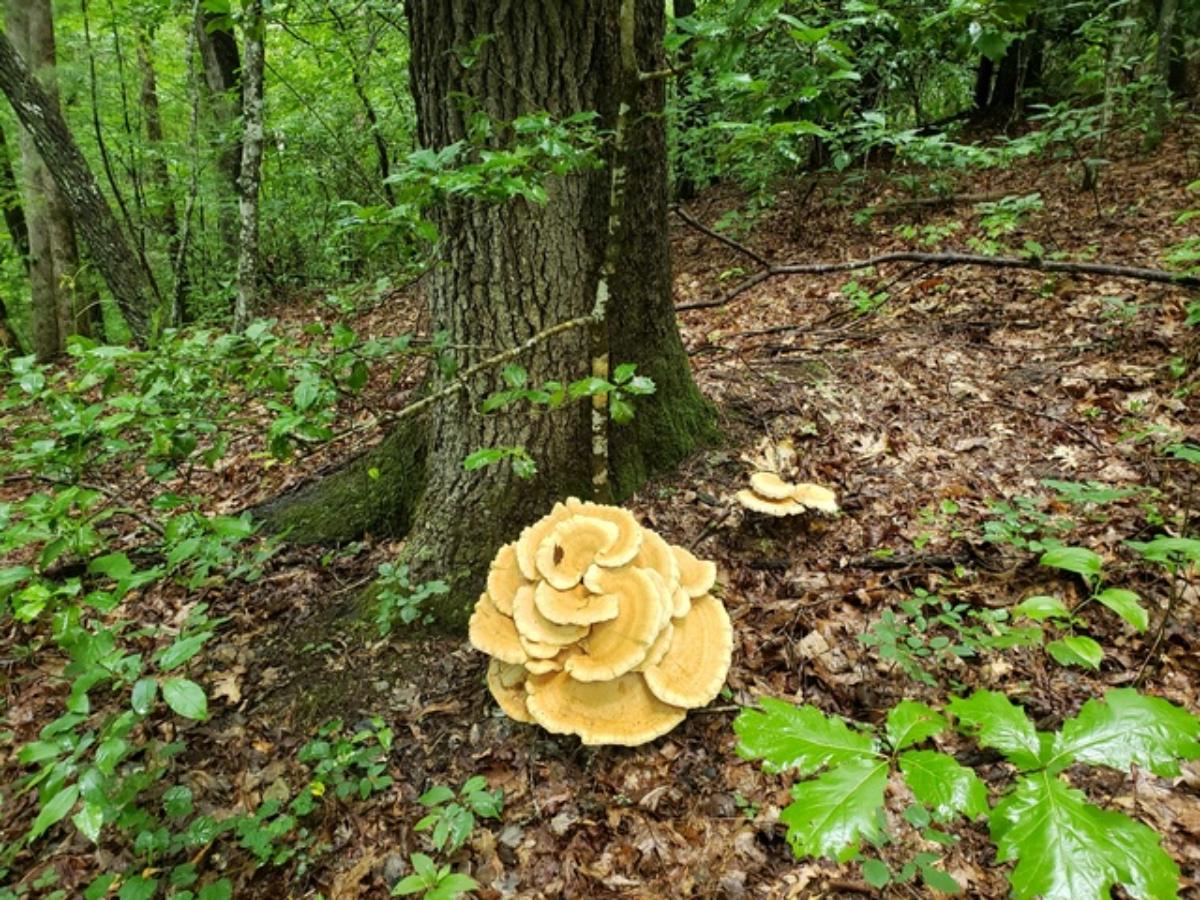
Berkeley’s Polypore Identification Guide
Season
It is commonly found from July through October.
Habitat
Berkeley’s polypore is a parasitic and saprophytic fungus that grows at the base of oaks and other living deciduous trees, around decaying stumps, or from buried roots. The trees it attacks won’t recover, but it may take several to many years for the fungus to do its full deadly damage.
The fungus usually appears as a single massive formation at the base of the tree, but it is also not uncommon to see many rosettes around a single tree or stump. In North America, the fungus has been recorded growing on a variety of oak species, as well as bird cherry (Prunus pensylvanica).
Berkeley’s polypores are widespread across North America, east of the Rocky Mountains. It is found in all environments, from forests to meadows to your backyard. It isn’t picky about canopy or habitat, only that it has a connection to a decaying hardwood tree nearby.
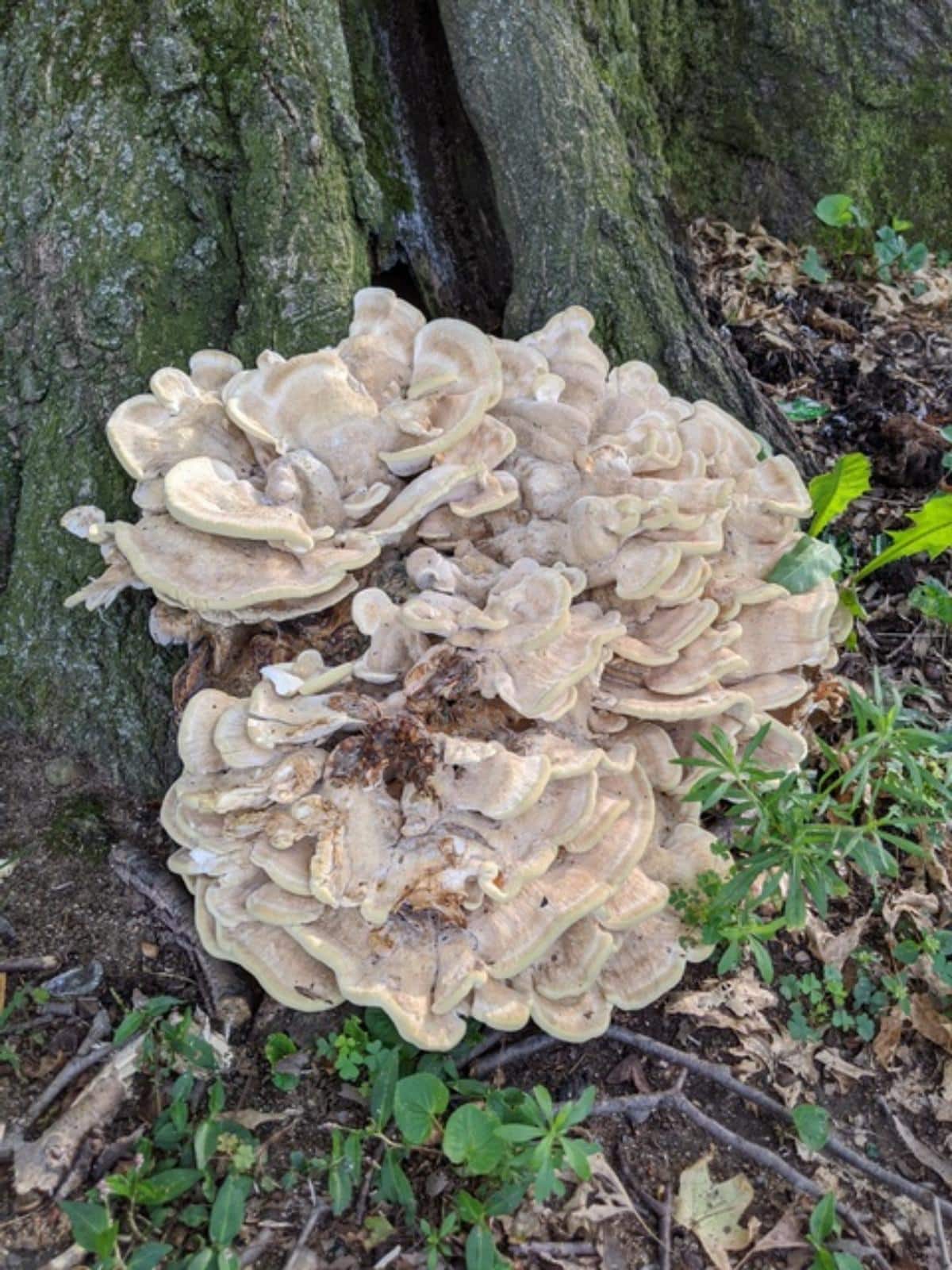
Identification
Cap
This fungus features multiple fan-shaped caps that range from 3-12 inches wide. The caps are creamy white to yellowish or tan, dry, and sometimes pitted or rough in texture. They can be velvety or leathery to the touch.
The shelves grow in large rosette formations (think of how rose petals are arranged, circular, and overlapping) – each fungus is made up of multiple caps attached to a single stem structure. Sometimes, there are just a few, but often, many closely packed overlapping caps form one rosette cluster.
When young, the clusters are small, fleshy, and generally very white. With maturity, the caps get very dense, tough, slightly darker colored, and massive.
Pore Surface
The underside of the Berkeley’s polypore is whitish and may become dingy with age. The pore surface descends down the stalk a little bit. Pores do not bruise, or they may bruise slightly yellow-brown.
Stem
Berkeley’s polypore’s stem is not always that distinct. It is short, stout, tough, often gnarled in shape, grows off-center, and is rooted in the wood it is growing from. The stem ranges in size from 1-.5-4 inches long and 1-2 inches wide and is whitish or very dull yellow.
Flesh and Scent
The flesh of Berkeley’s polypore is white, thick, and tough and does not change color when cut or bruised. It has a mild taste that turns bitter with maturity.
Spore Print
White
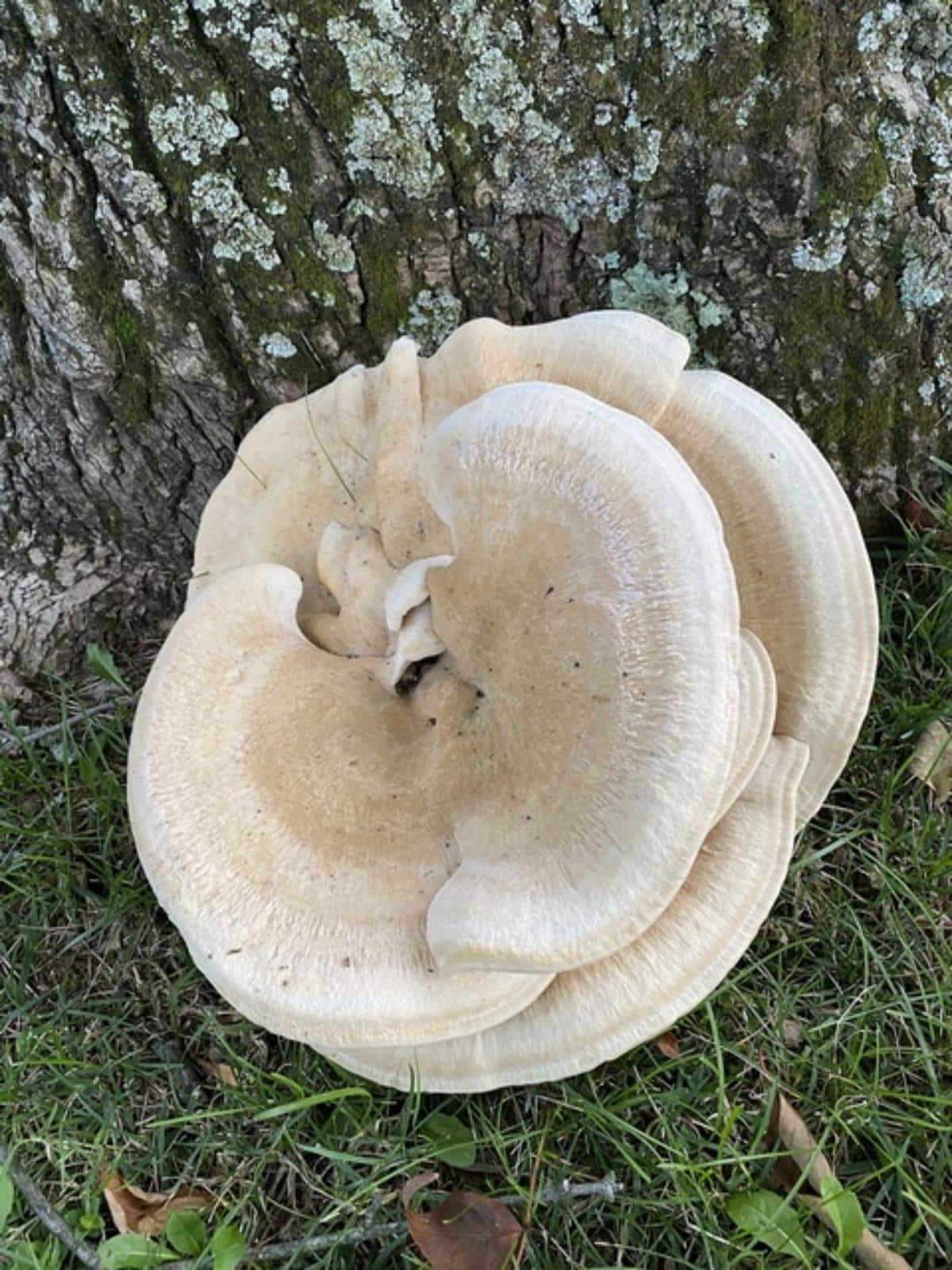
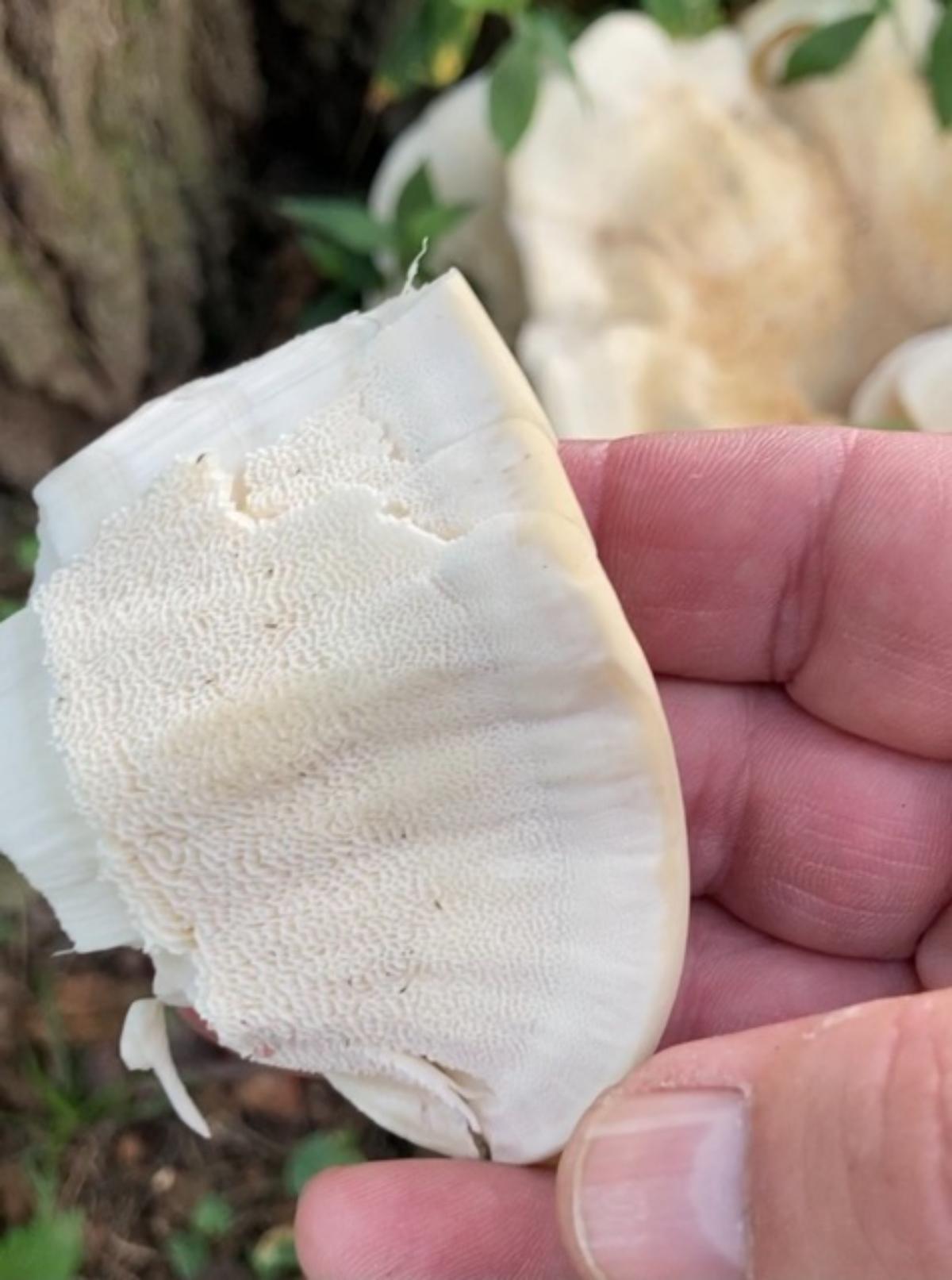
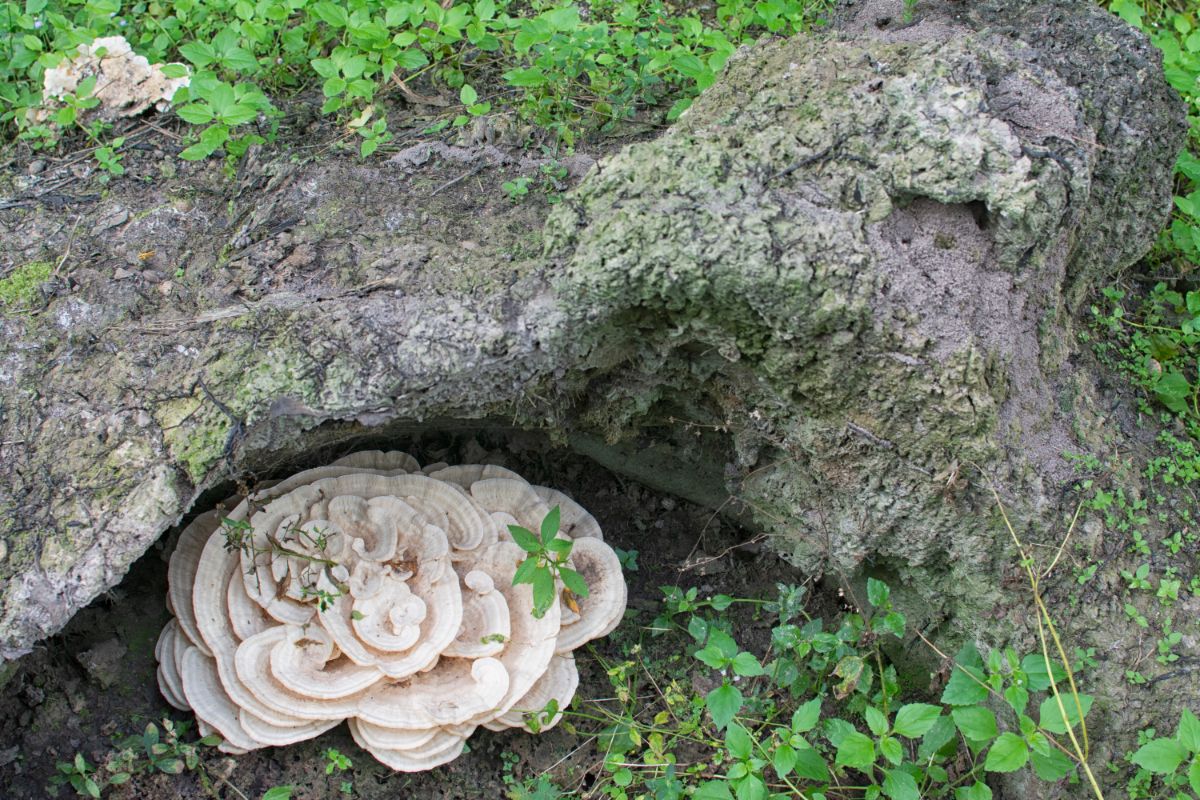
Berkeley’s Polypore Lookalikes
There are several other mushrooms that may resemble the Berkeley’s polypore. It is important to be aware of these lookalikes and learn how to distinguish them from the true Berkeley.
Hen of the Woods (Grifola frondosa)
Hen of the woods, also known as maitake, has numerous smaller, grayish-to-brownish caps, and its overall appearance is more frond-like than the Berkeley Polypore. When differentiating, notice the zoned coloring on the Hen of the Woods cap fronds and how dark the colors are, too.
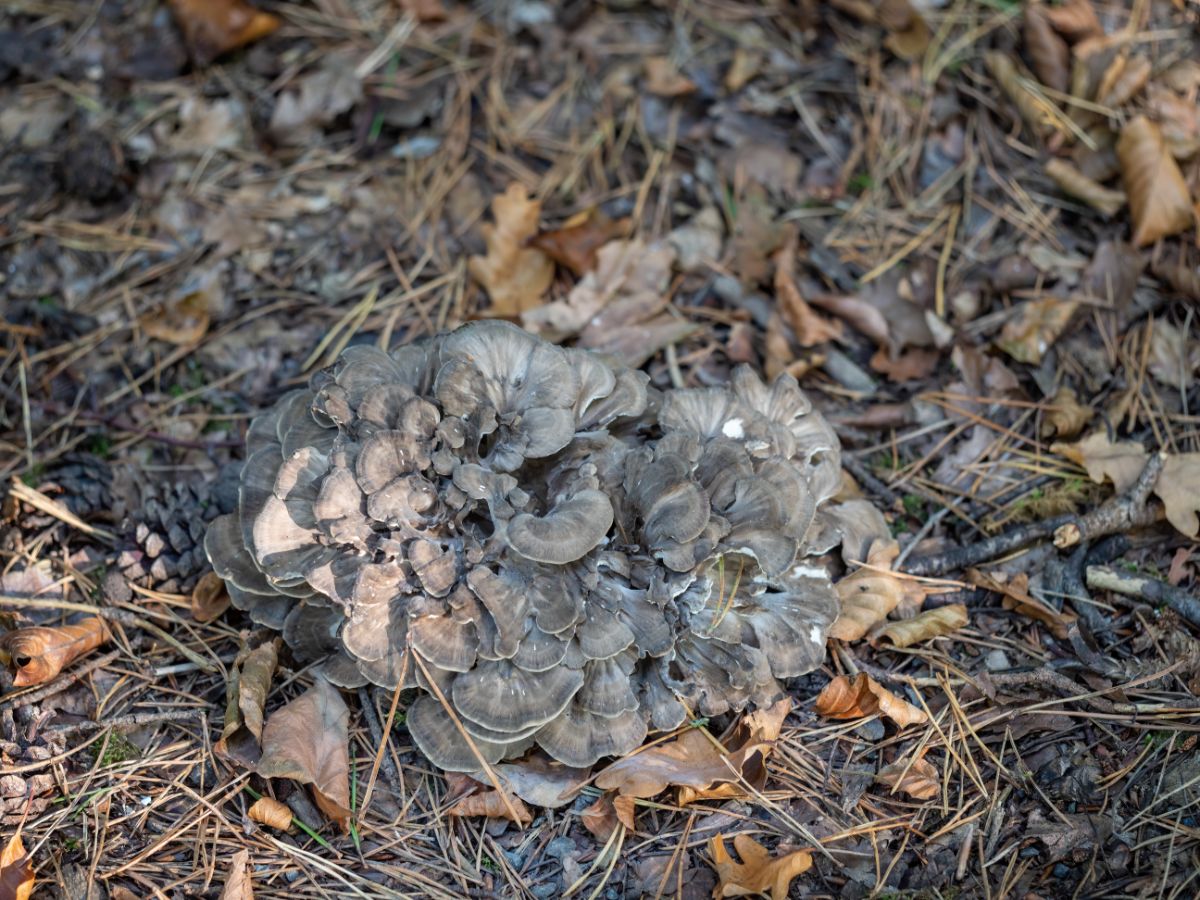
Black-staining Polypore (Meripilus sumstinei)
The black staining polypore species is extremely similar-looking, even up close. This is especially true when both species are young. Once the Berkeley polypore reaches its massive mature width, it is obviously not the black-stainer, which is much, much smaller overall. However, there is an easy way to solve any confusion. The black-staining polypore turns black when bruised or handled (hence the name), distinguishing it from the Berkeley’s polypore.
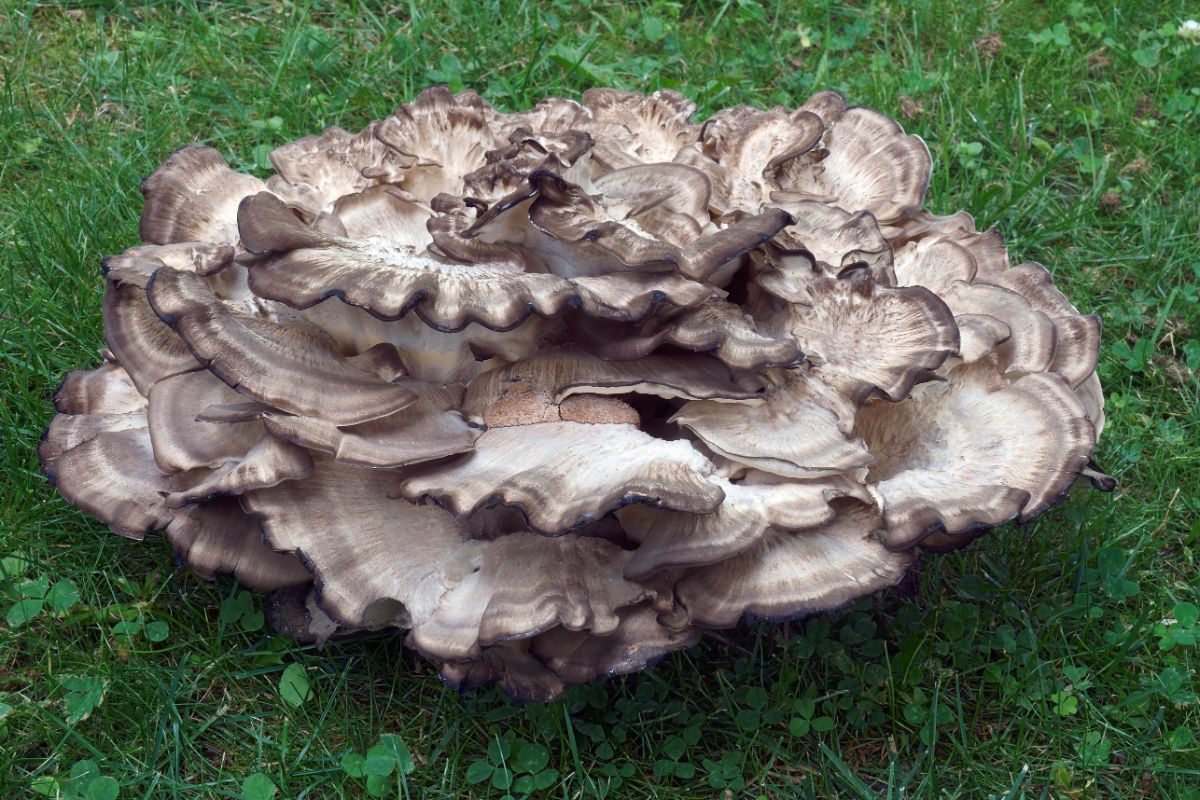
Chicken of the Woods (Laetiporous spp.)
At maturity, it’s usually easy to tell the chicken of the woods apart from the Berkeley’s polypore. The chicken is bright orange, while the Berkeley is creamy white. However, one species of chicken of the woods is very lightly pale orange to yellow colored and Berkeley-looking. The confusion is especially easy to make when both species are young and have yet to show off their mature form.
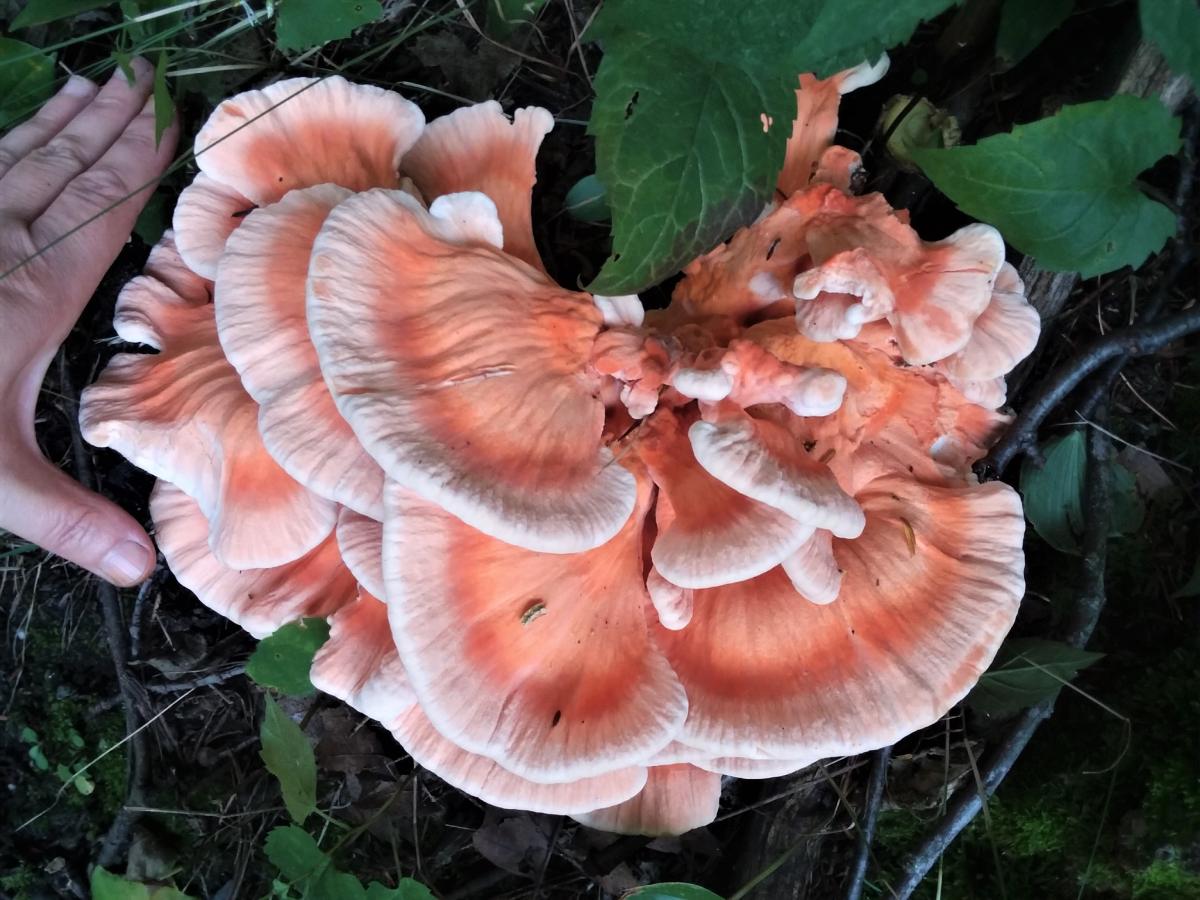
Foraging Berkeley’s Polypore
Unfortunately, usually by the time you see this massive polypore, it is long past the point of foraging. Berkeley polypore is only edible when it is very young and very small. So, if you want to enjoy this one on the dinner table, you have to catch it while it’s young.
Look for small whitish, thick, fleshy bumps or knobs protruding from the wood — when very young the fungus doesn’t have defined caps. Chicken of the woods and Reishi also start out similar, as subtle, shapeless whitish blobs.
They do form caps rather quickly, though, and are still good foraging when the caps are small. Squeeze or cut the cap edges to see if they are supple enough. Any corkiness or toughness means they are past prime foraging time.
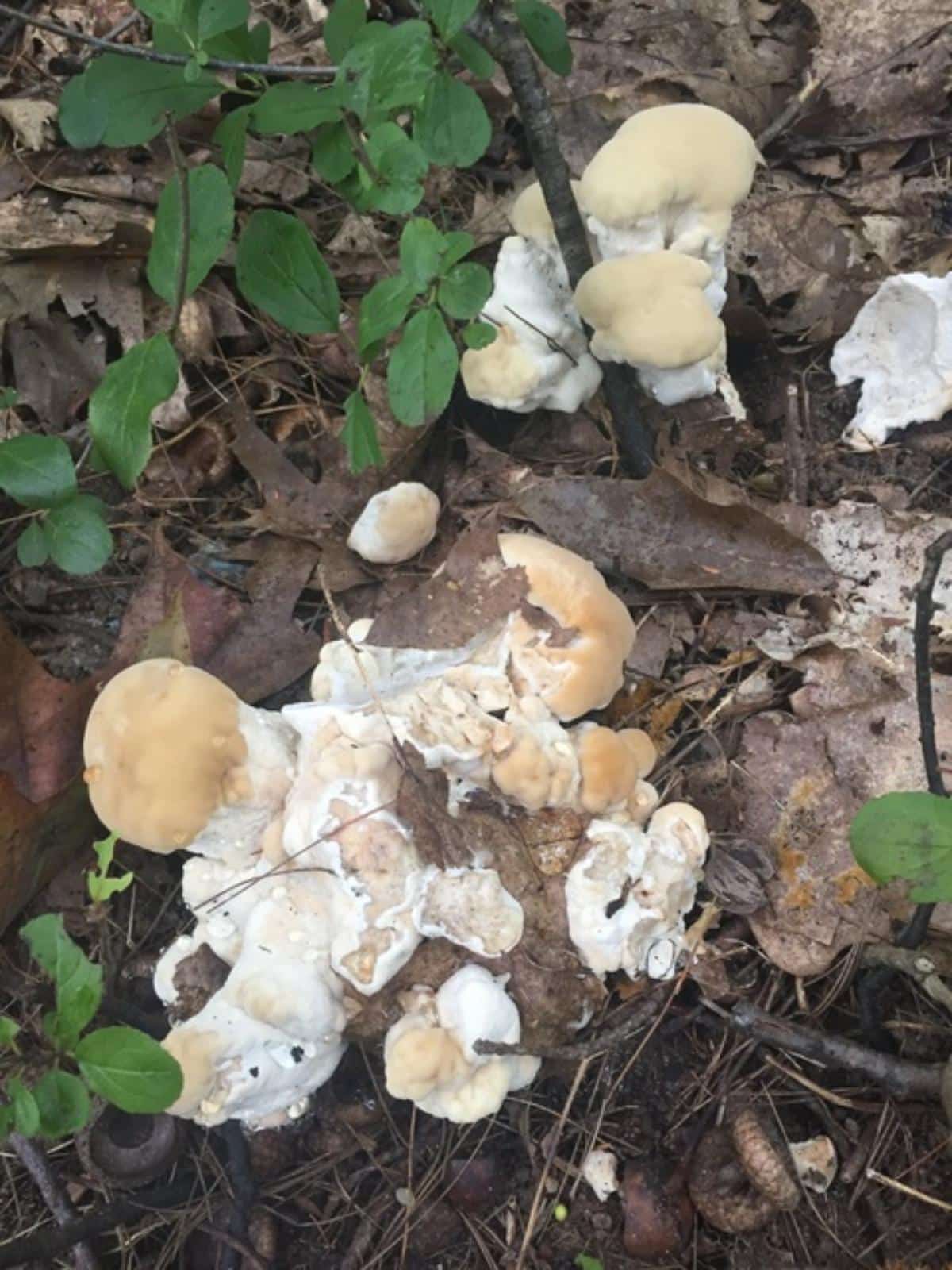
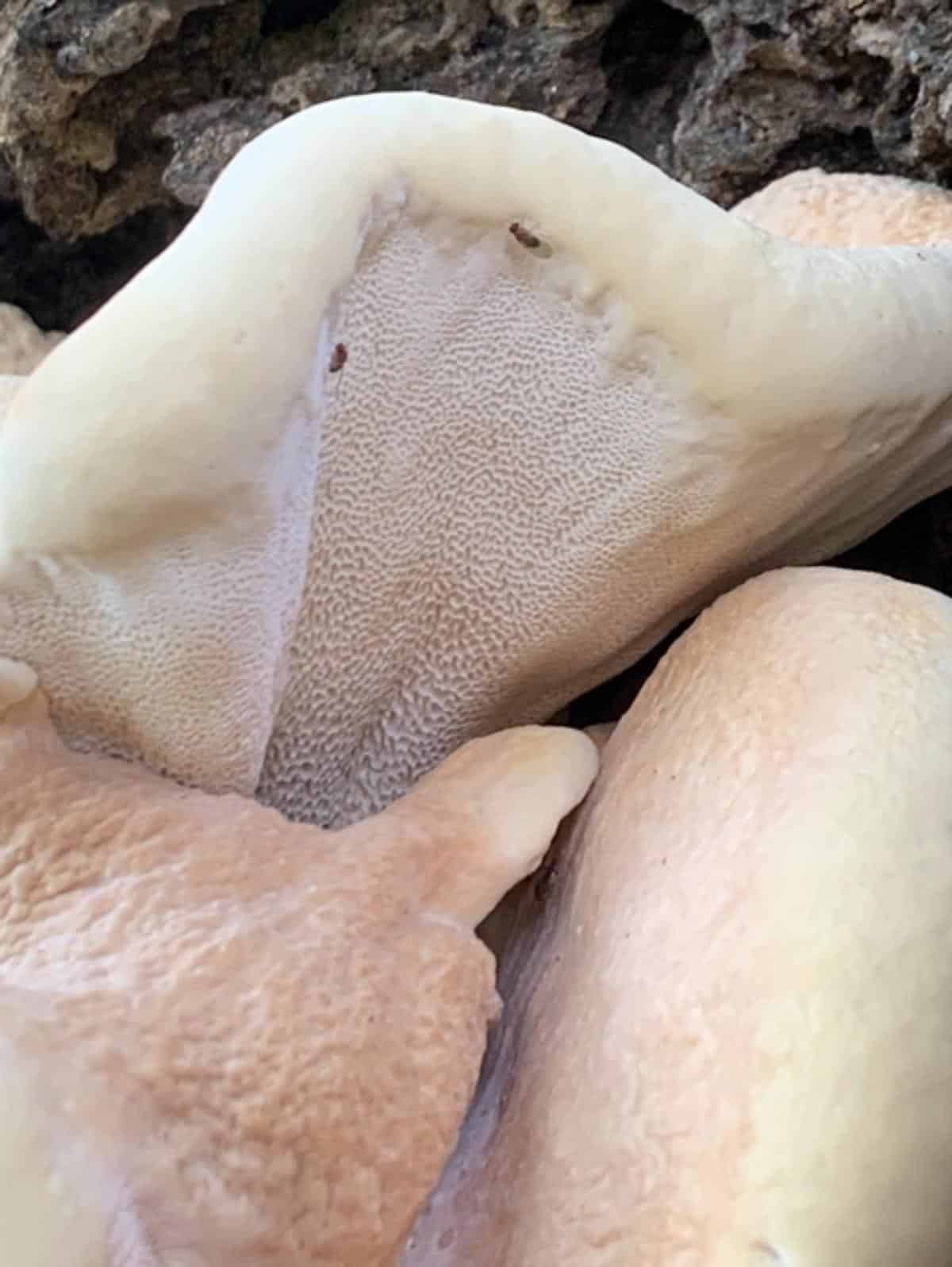
Berkeley’s Polypore Edibility and Cooking Preparations
Berkeley Polypore is considered edible when young as long as the outer edges of the caps are easy to cut. These tender portions can be used in various dishes, providing a meaty texture and mild flavor. Some compare its culinary use to tofu, as it can help enhance other flavors in a dish.
As the mushroom ages, it becomes tough, woody, and bitter, making it less desirable for consumption. Always exercise caution when trying a wild mushroom for the first time, and only consume a small amount to avoid potential allergic reactions.
It is essential to cook the Berkeley’s polypore before eating it, as raw mushrooms can cause digestive issues. The mild and earthy flavor of the mushroom can be enhanced when cooked, and it can be used to strengthen other flavors in dishes. Some people also use the Berkeley’s polypore as a meat substitute due to its firm texture.
This in-depth culinary journey with Berkeley’s Polypore is fascinating and enlightening — great ideas here!
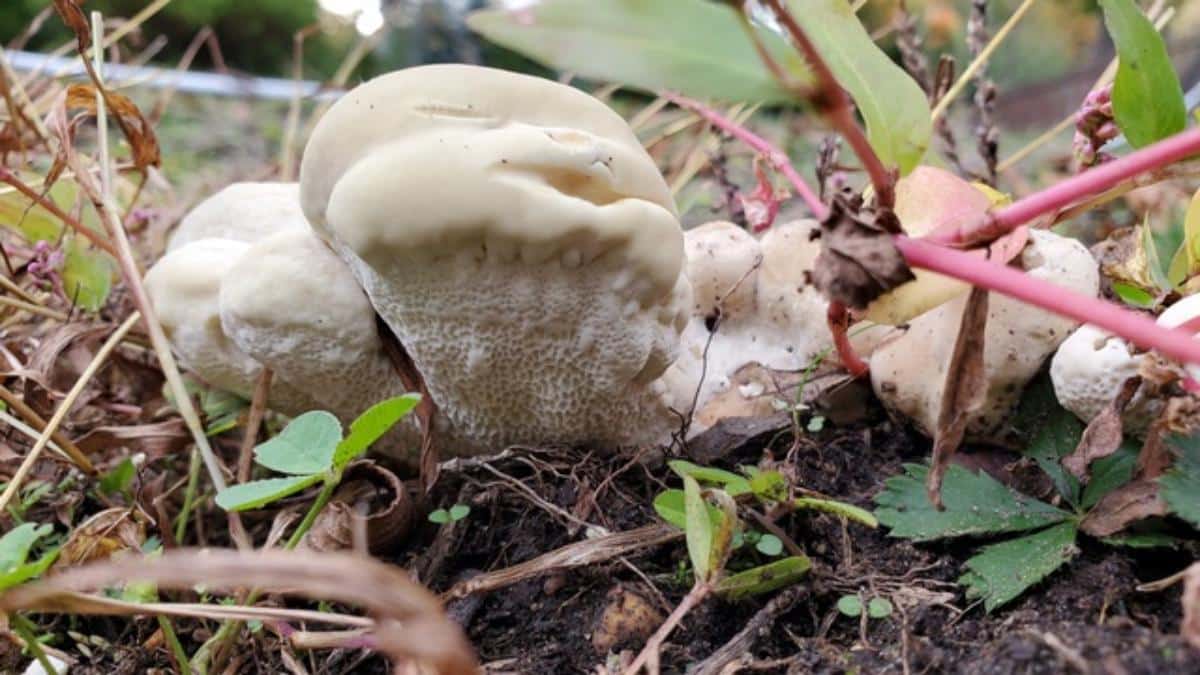
Medicinal Properties of Berkeley’s Polypore
While research on the medicinal properties of Berkeley’s polypore is limited, many mushrooms in the polypore family are known to possess health benefits. Some studies suggest that certain polypores may have immune-boosting, anti-inflammatory, and anti-tumor properties. Further research is needed to determine if these benefits extend to Berkeley Polypore.
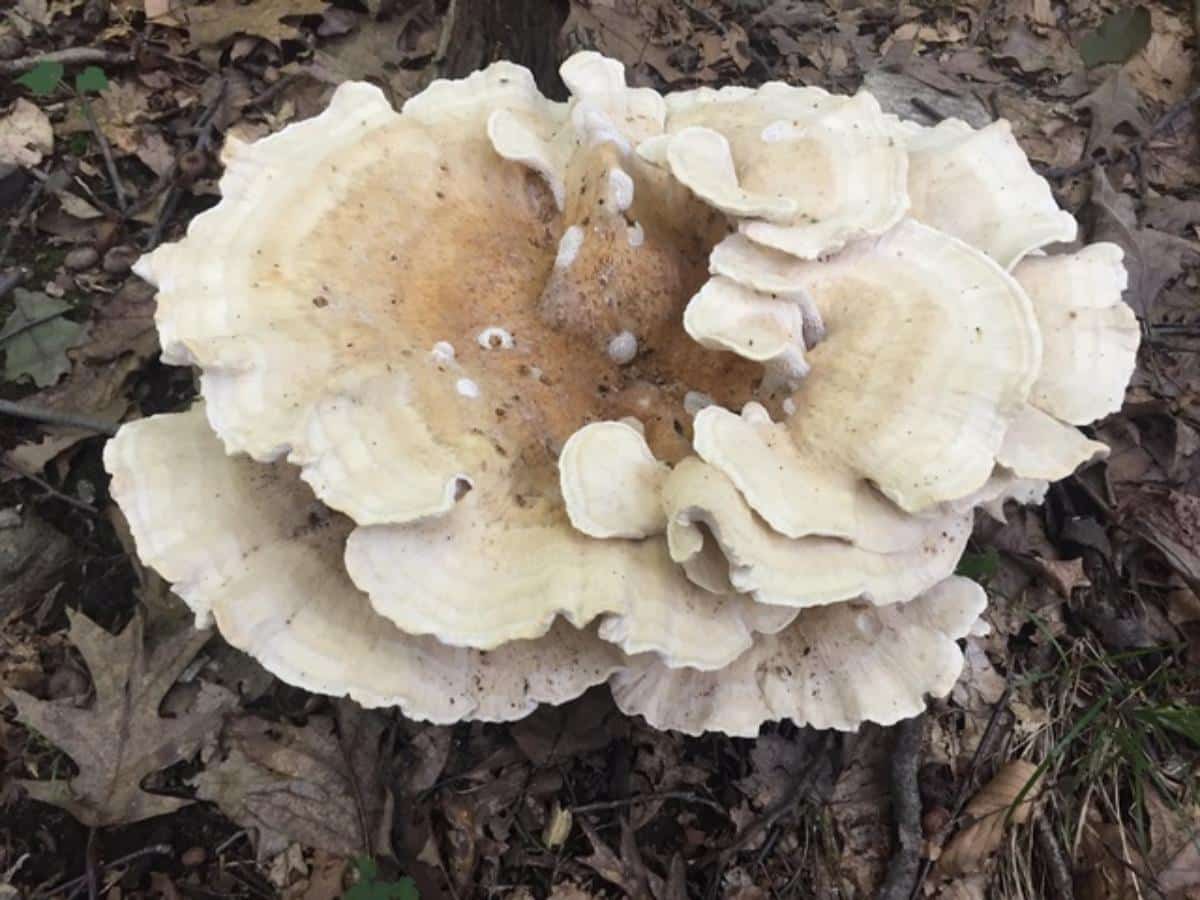
Lifecycle and Ecological Significance of Berkeley’s Polypore
Berkeley’s polypore plays a vital role in maintaining a healthy ecosystem. As a decomposer, it feeds on dead or dying trees, breaking them down and recycling nutrients back into the soil. This process may be unglamorous, but it is essential for sustaining the delicate balance of the forest.
The fungus Bondarzewia is a common and destructive pathogen of oaks. Hardwoods, mostly of the genus Quercus, are the favored host for B. berkeleyi; however, other deciduous trees can be affected. It is usually found on trees in forests or on stumps in managed areas, and it can cause a white stringy rot of the heartwood in the roots and lower trunk. The decay tends to only extend to a maximum of 3-5 feet of the lower trunk, and it has a relatively fast growth rate.
Because the rot is limited to the heartwood, the tree may just appear to have excessive tapering at the base. Other symptoms can include cracks, seams and sap flow on the lower trunk. The fungus produces annual mushrooms with spores that are mostly dispersed locally and it is unlikely that they will spread to nearby oaks.
Due to the absence of effective remedies, fungicide usage does not have much effect. Keeping the tree vigorous and avoiding unnecessary basal injury is the best way to ward off the spread of the disease.
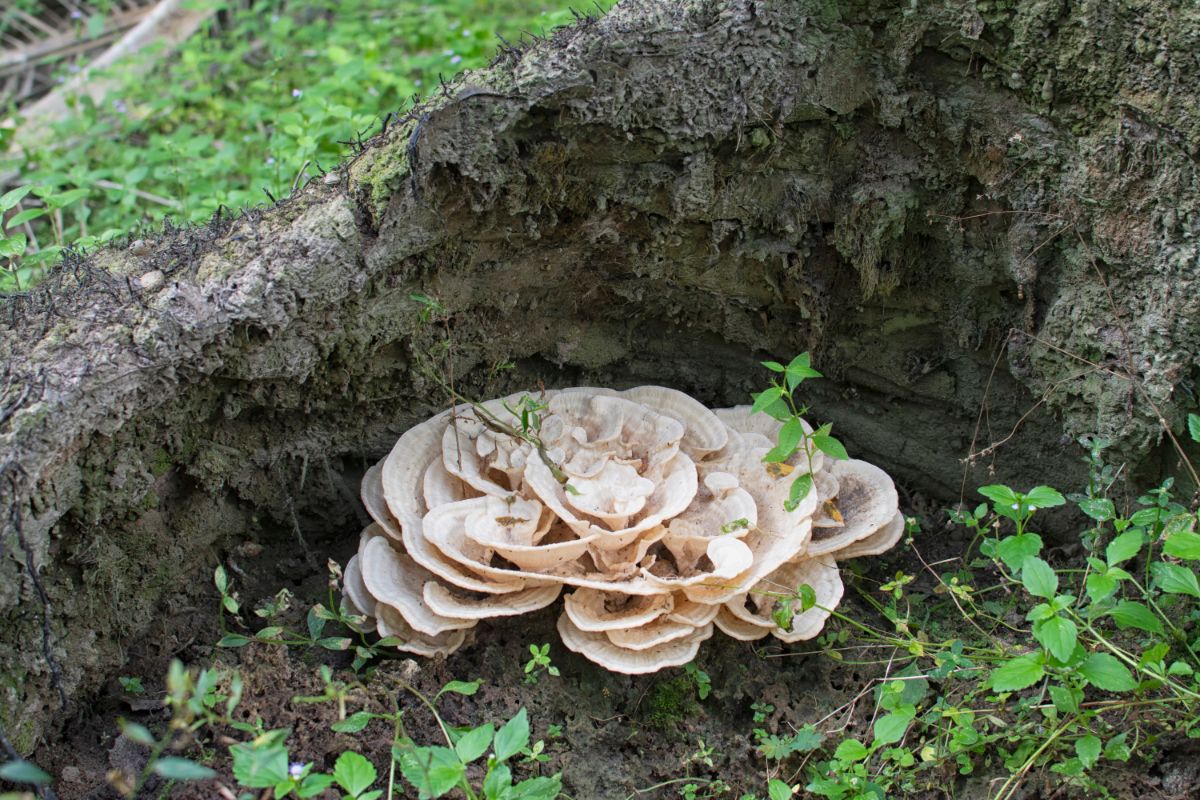
Common Questions About Berkeley’s Polypore
How do I get rid of Bondarzewia berkeleyi?
Nothing works to get rid of the fungus pathogen in the tree. Fungicides don’t work. You can remove the fruiting body of the mushroom, but that does nothing to prevent the mycelium from sprouting new growth in following years. Keeping the tree healthy can prolong its life but eventually it will probably succumb.
Are Berkeley’s polypore edible?
Yes, when it is young and fleshy, it is a good edible species. However, it turns tough and bitter quickly with maturity.

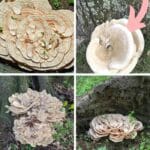


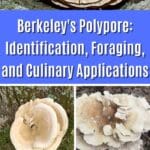

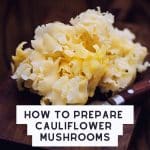
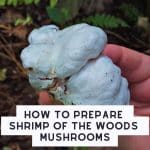

Leave a Reply